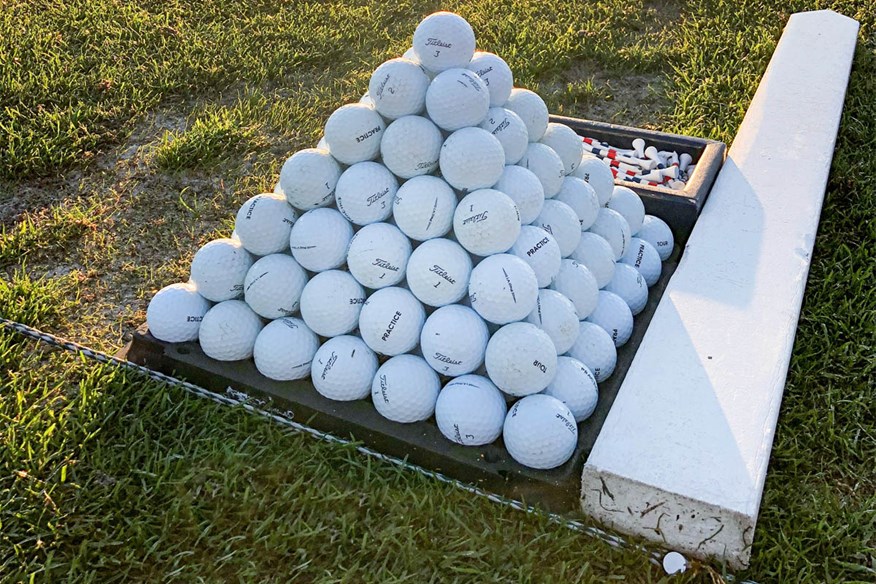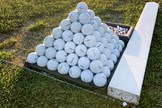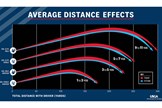Golf ball rollback: Everything you need to know
Last updated:
It’s official – the golf ball rollback is happening! Here’s everything you need to know about the R&A and USGA’s landmark decision to future-proof the game and its courses.
The R&A and USGA have finally dropped the widely expected news that testing conditions for golf ball conformation will change, rendering nearly every golf ball in circulation non-conforming from January 2028.
The game’s governing bodies have been hinting at rolling back the ball for years in attempts to reduce the impact that increased hitting distances are having on golf’s long-term sustainability.
The most influential voices in golf had been locked in a stalemate on the issue, prompting the game’s stalwarts to step in and deliver on their promise that ‘doing nothing is not an option’.
With the PGA Tour unwilling to support a set of bifurcated rules, and iconic golf courses across the world on the verge of losing their integrity, the R&A and USGA have seemingly been left with little choice but to implement a universal rollback for golfers of all abilities.
Here is what we know, along with the latest debate which will inevitably ‘roll on’ for some time to come…
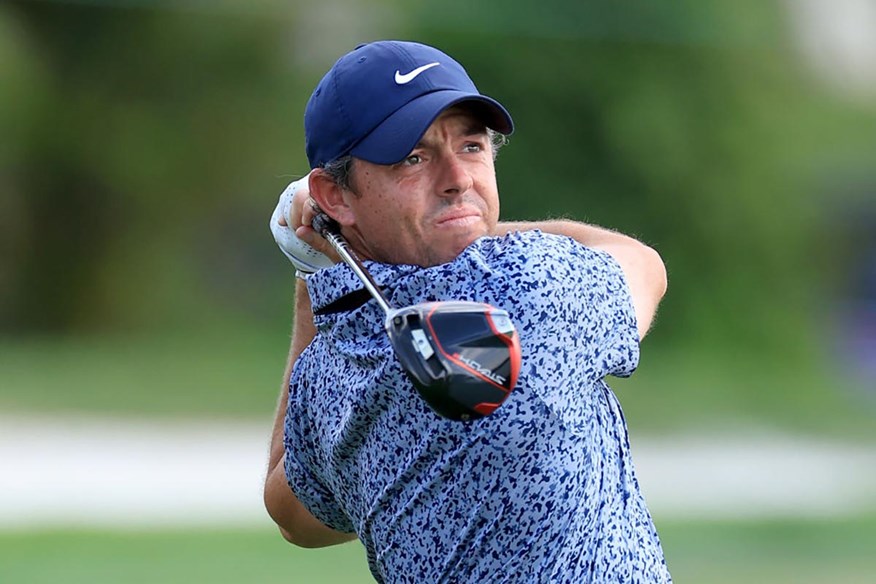
What exact changes will the R&A and USGA be implementing?
The golf ball rollback is designed to curb the hitting distances of Bryson & Co by changing the way golf balls are manufactured and tested.
Under the new proposals, golf balls struck at a robot-controlled swing speed of 125 mph – up from 120mph – must not exceed 317 yards to conform. The revision effectively keeps the ‘Overall Distance Standard’ (ODS) consistent, despite increasing swing speed by 5 mph.
In addition to swing speed, the current testing conditions for spin rate and launch angle will be revised to 2200 rpm and 11 degrees, from 2520 rpm and 10 degrees respectively.
These criteria are based on extensive analysis from worldwide tours over several years and are intended to ensure that the ODS (remaining unchanged at 317 yards with a 3-yard tolerance) continues to represent the ability of the game’s longest hitters.
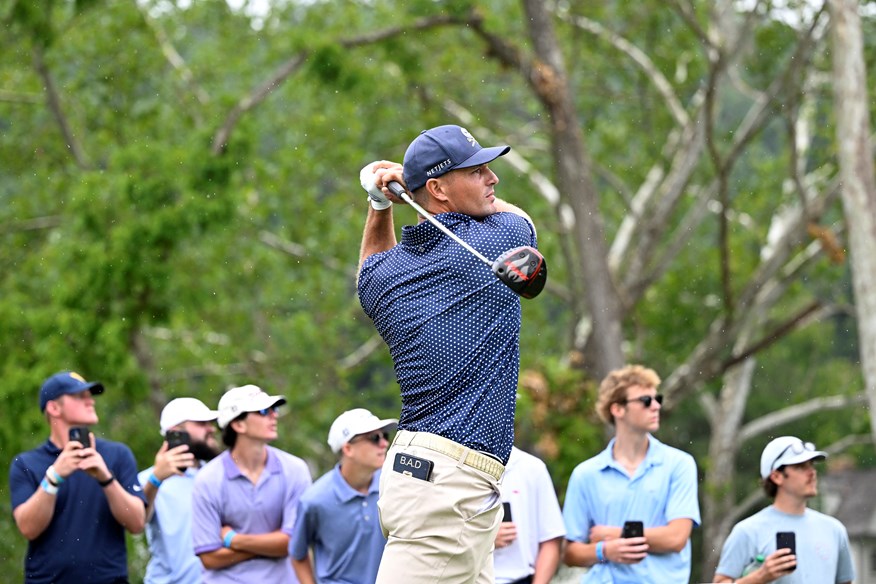
How will the rollback affect tour pros?
The change is expected to ‘roll the ball back’ by 15 yards for the game’s longest hitters, effectively bringing us back to the late 90s. With the average driving distance on the PGA Tour bang on 300 yards, the 15-yard rollback represents a reduction in driving distance of 5%.
Shorter hitters on the men’s professional tours are expected to see a reduction of approximately 9-11 yards, with elite female players seeing a 5-7 yard reduction to their overall distance.
When will the golf ball rollback come into effect?
Feedback from manufacturers throughout the “Notice and Comment” period resulted in authorities extending the timeline to allow for more innovation time. The rollback will therefore officially come into effect for elite players from January 2028.
Existing balls approved as conforming in 2027 will be eligible for use by recreational golfers until January 2030, creating two years of bifurcated rules, and providing manufacturers and retailers sufficient time to adjust.
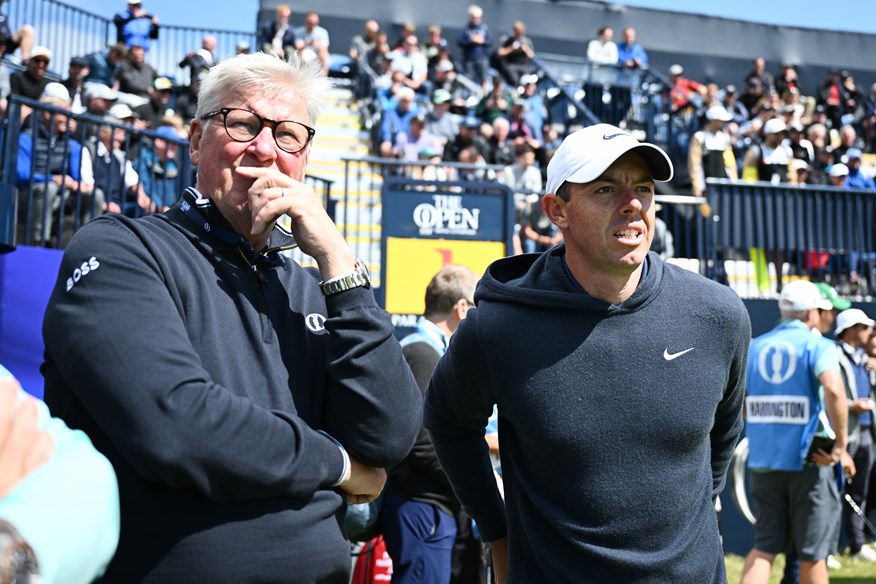
What does the rollback mean for you?
It was initially thought that all levels of golfer would see a proportional reduction in their hitting distances of 5%. This would have seen a male amateur golfer with an average swing speed (93 mph) lose around 10 yards.
According to USGA’s data analysis, however, it appears that the impact across skill levels will be more nuanced, with the highest swing speeds disproportionately affected by the rollback.
Therefore, instead of the anticipated 10-yard reduction for the average male amateur, the USGA claims the number to be 3-5 yards, while the average female amateur should expect to see a negligible difference in their driving distance (just 1-3 yards).
It’s important to bear in mind however that recreational golfers of the same handicap can have vastly different swing speeds, and this data suggests the rollback effect will be individualized.
Until we have some empirical data testing these claims, the exact impact of the rollback on distance remains a slightly grey area, however, one thing is for certain – your long irons will be getting a lot more use!
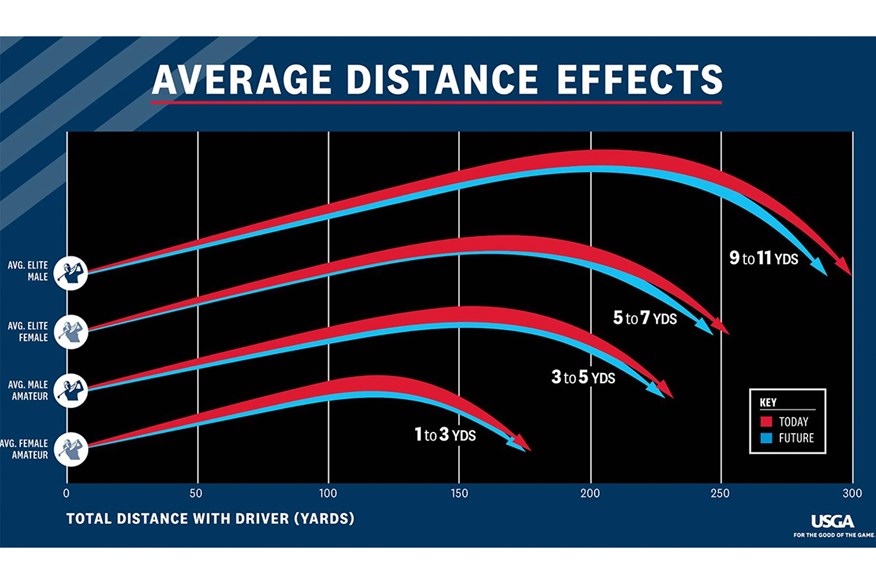
How did it come to this?
The decision follows the most comprehensive examination of the distance in the game’s history through the Distance Insights Project, launched in 2018 and gathered data, shared research, and solicited feedback from golf course owners, players, and stakeholders across the game.
Many golf courses have already been extended – at the detriment of sustainability and pace of play – to coincide with distance gains, but many more are in danger of becoming obsolete because the architect’s original intentions have been lost.
To prove their point, the R&A revealed in their Annual Distance Report which reveals that over the last 20 years hitting distances have increased on average by around one yard per year. It’s a problem that wasn’t going away.
It was reported that Augusta National spent in the region of $25 million purchasing land to lengthen Azelea (the iconic par-5 13th) to restore one of golf’s greatest risk-reward holes which was too easily being negated by players routinely being able to hit mid-irons into the green.
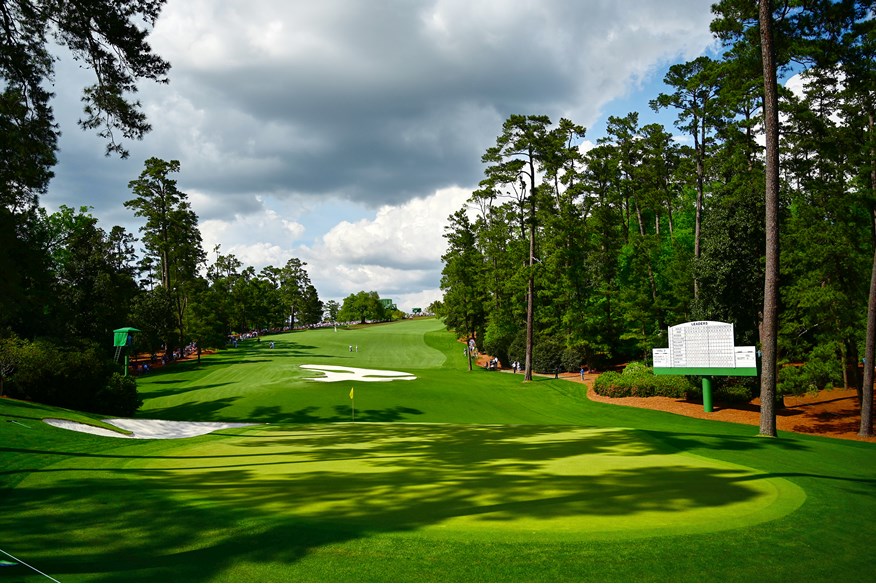
Aside from the sustainability of golf courses, some stakeholders have been concerned for a while that the integrity of golf as a sport requiring a diverse set of skills to succeed at the highest level is being challenged by the biggest hitters in the game.
While those distance-dominant players have likely worked just as hard in mastering their craft, it has posed the question of whether golf is lacking the shotmaking, control, and creativity it once had, and if this is in the best interest of the game’s long-term future.
Reaction – what has everyone had to say so far?
The PGA Tour:
In a memo from PGA Tour Commissioner Jay Monahan on July 26th, the R&A and USGA were notified that they would not support the original bifurcation plans.
During discussions at a Players Advisory Committee, Monahan conceded there had been some level of support for the proposals but ultimately there was a “widespread and significant belief that the proposed rollback is not warranted and is not in the best interest of the game.
In a further memo to PGA Tour members on December 6th (the official rollback announcement), Monanhan reiterated that belief. He said: “The proposed increase in test clubhead speed to 125 mph is disproportional to the rate of increase we see when analyzing PGA Tour radar data on launch conditions, using best practices for analyzing data.
“Therefore, we do not support today’s announcement regarding the increase to 125 mph, believing a more moderate adjustment is appropriate.”
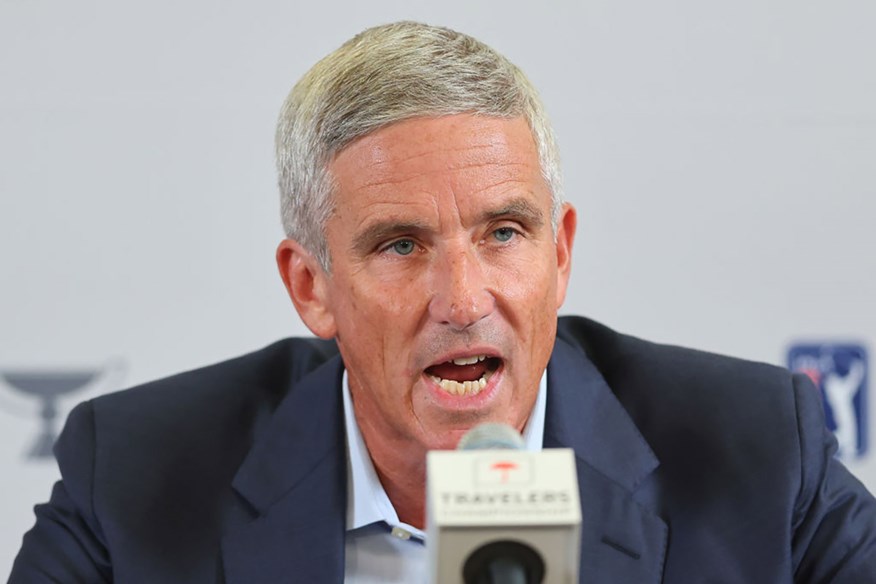
The ‘rollback to the future’ fans:
While the majority of players have argued strongly against the rollback, Rory McIlroy has consistently defended the proposals and took to social media to make his position clear.
“I don’t understand the anger about the golf ball rollback. It will make no difference whatsoever to the average golfer and puts golf back on a path of sustainability. I don’t believe an average golfer giving up 5-10 yards off the tee is going to have a material effect on their actual score, handicap, or enjoyment of the game,” said McIlroy.
He added: “It will also help bring back certain skills in the pro game that have been eradicated over the past two decades.”
McIlroy’s sentiments were echoed by Andrew ‘Beef’ Johnston, who recently returned to action on the DP World Tour after recovering from injury. He said: “Any professional complaining about the golf ball rollback should’ve played my comeback event in South Africa. My caddie and I barely had to speak on the tees.
“The course was more than 8,200 yards so I just reached straight for the driver on every par 4 or par 5. No need for any other strategy, just hit it as far as you can and if you miss the fairway, you’ll still have a shot”, added Beef.
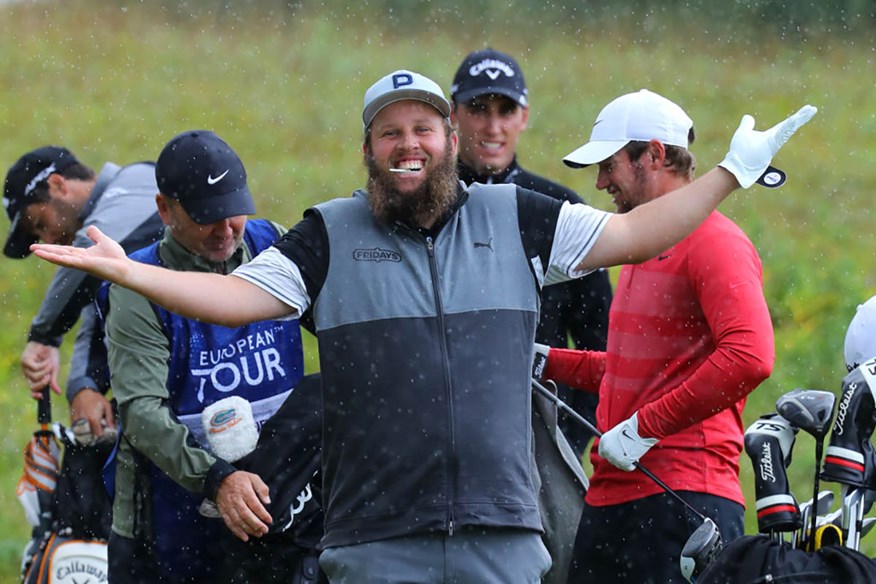
Three-time Major winner Padraig Harrington has also weighed in with support for the rollback, citing how players should trust governing bodies to make decisions on their behalf for the greater good of the sport, citing various rule changes over his career that have split the locker room.
“I can’t think of a reason why our game’s governing bodies would not act in golf’s best interest. This is just one of many rules they change every few years, said Harrington.
“They don’t always get it right, but they act in the group’s best interest, if not always in the individual’s best interest. If it doesn’t work they can always change it back.”
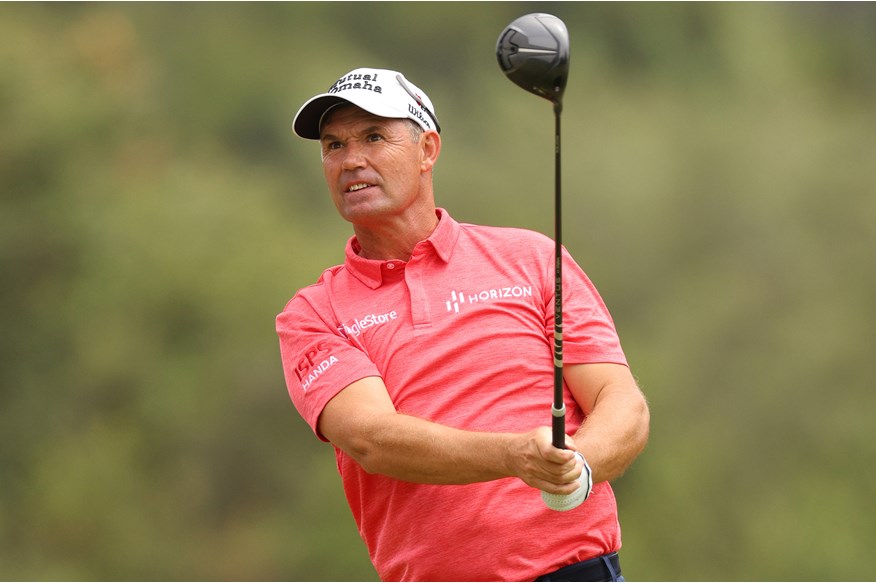
The ‘rage against the rollback’ crew
According to Brandel Chamblee, the vast majority of touring professionals along with 50 million golfers worldwide are opposed to the rollback. The American commentator spoke in opposition to Rory’s belief that the everyday golfer will not be impacted, arguing that these are the players who will be hurt most by the rule change.
“Because a few tour players through years of practice, thousands of hours in the gym, and yes, advances in tech, can carry the ball 283.8 yards (tour average for 2023) they want to penalize 50 million golfers, said Chamblee.
“Appreciate the athleticism of the best, but don’t punish the only people in the game who will feel the sting of this decision”, he added.
Justin Thomas
“I think the USGA over the years has made some pretty selfish decisions. In my mind, they have done a lot of things that aren’t for the betterment of the game, although they claim it.
“The amount of time, and money that these manufacturers have spent trying to create the best product possible, and now you’re going to tell them and us that we have to start over for potentially if the PGA Tour, PGA of America, don’t adopt this local rule. So for two of the four biggest events of the year, we’re going to have to use a different ball? Like, try to explain to me how that’s better for the game of golf.”
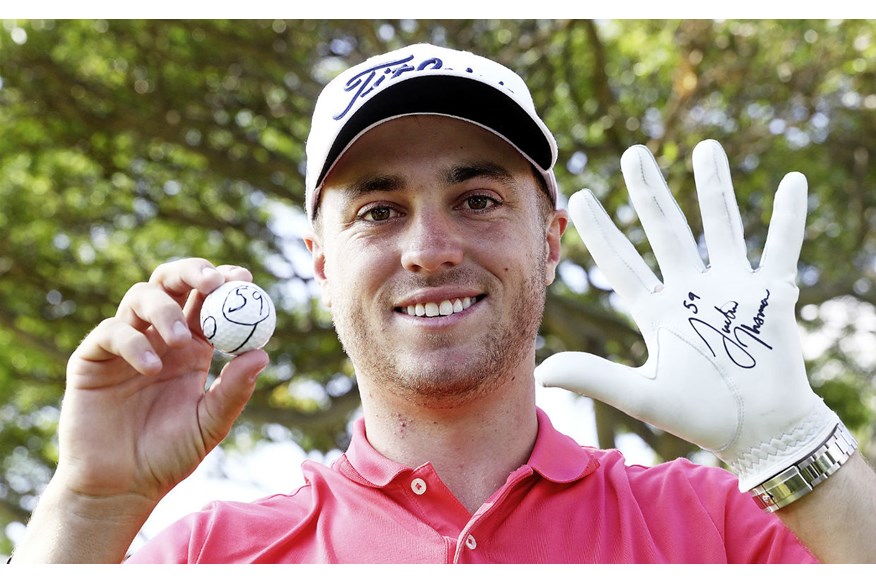
Rickie Fowler
“To take the game and knock it back when it’s in the best position it’s ever been in, I don’t want to see it as the golf ball being necessarily the right move. I don’t see how when we’re at the best place the game has ever been.
“Oh, you love the game? Yeah. Hey, thanks for joining us over COVID. Now we’re going to make you hit it 20 yards shorter. Have fun. I understand both sides. But looking at it as far as the game and everyone talks about growing the game, I think it’s going to be a huge step back.”
Keegan Bradley
“Srixon made whatever the USGA was saying, and it was 40, 50 yards shorter with my driver. I was a club or two shorter. I think that everything they [the USGA] do is reactionary. They don’t think of a solution. They just think we’re going to affect a hundred percent of the population that plays golf.
“For the amateur world to hit the ball shorter is monstrous. I can’t think of anything more stupid than that. I don’t think it’s very smart at all, especially when golf’s growing in popularity coming out of COVID.”
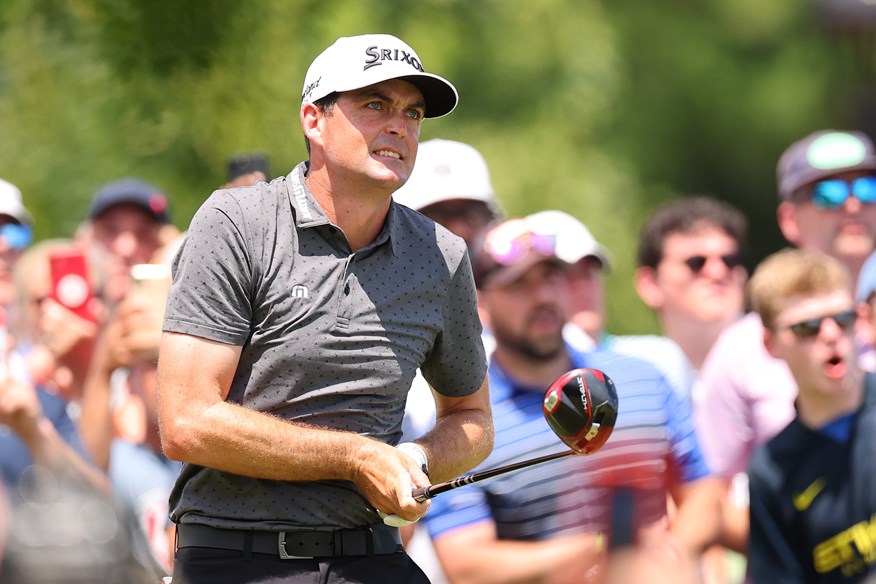
Bryson DeChambeau
“I think it’s the most atrocious thing that you could do to the game of golf. It’s not about rolling golf balls back; it’s about making golf courses more difficult. I think it’s the most unimaginative, uninspiring, game-cutting thing you could do. Everybody wants to see people hit it farther. That’s part of the reason why a lot of people like what I do.”
Sam Burns
“I think it’s pretty silly. I would say if you look at the last few years of golf, I think the game has grown tremendously. At the end of the day no matter what it is, we’re an entertainment sport and I don’t think people necessarily want to come out here and watch guys hit it shorter.
“They enjoy watching guys go out there and hit it 350 yards. I don’t see what the problem is with that. I think that’s a skill and I don’t agree with trying to take that away.”
What about Tiger?
Tiger is in Rory’s camp on this one. The 15-time Major winner has always been in favor of bifurcation, citing how professionals in baseball have long used wooden bats while recreational players use metal.
“I think this should have happened a long time ago. We’ve been hammering the ball needs to slow down.
“I’ve been of the position if you play in a pro event or you have a ‘P’ next to your name, you should be playing a pro ball. If you have an ‘A’ next to your name and you’re playing an amateur event, you should use an amateur ball.”
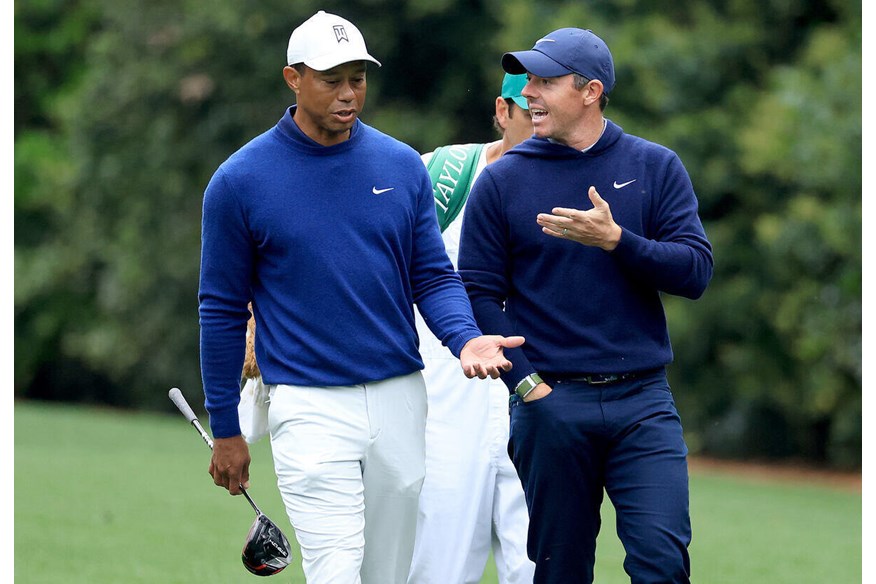
Are there any alternative solutions to rolling back the golf ball?
Aside from the lengthening holes, which is becoming unsustainable for many courses hosting elite-level competition, the only credible solution is to adapt and modify equipment.
The golf ball is perhaps an obvious solution, but not the only one. The distance issue has reached its crescendo thanks to the combination of technological improvements in the design of both balls and clubs.
This is one area at least where all parties are finding some common ground, with Jay Monahan including in his December 6th memo that the PGA Tour will “continue to support additional testing protocols to address the issue of ‘creep’ on the spring-like effect of driver faces.”
This solution was further highlighted by Lee Westwood, regarded as one of the best drivers of the golf ball in the modern era.
He said: “It’s not just the ball. The driver heads got too big and they developed a ball to maximize this and vice versa. Who knows, we might get back to a place where hitting the driver out the middle is rewarded again.”
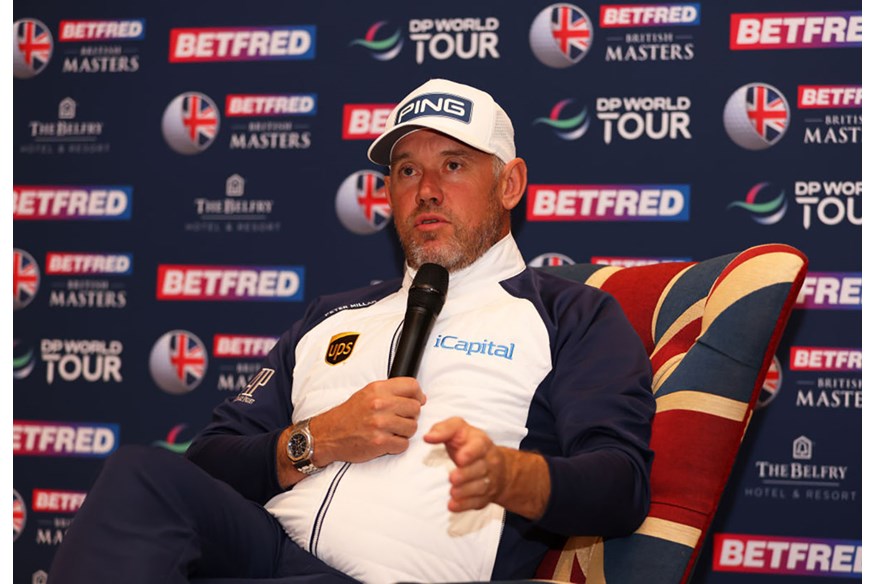
What have the CEOs of the R&A and USGA said?
Martin Slumbers, CEO of the R&A
“We are convinced that this decision is one of the key ways of achieving a sustainable future for golf, protecting the integrity of the game, and meeting our environmental responsibilities. The measure we are taking has been carefully considered and calibrated while maintaining the ‘one game’ ethos deemed to be so important to the golf industry.
Importantly, it also keeps the impact on recreational golfers to an absolute minimum. We are acting now because we want to ensure that future generations can enjoy the unique challenge of golf as much as we do.”
Mike Whan, CEO of the USGA
“Governance is hard. And while thousands will claim that we did too much, there will be just as many who said we didn’t do enough to protect the game long-term.
“But from the very beginning, we’ve been driven to do what is right for the game, without bias. As we’ve said, doing nothing is not an option – and we would be failing in our responsibility to protect the game’s future if we didn’t take appropriate action now.”
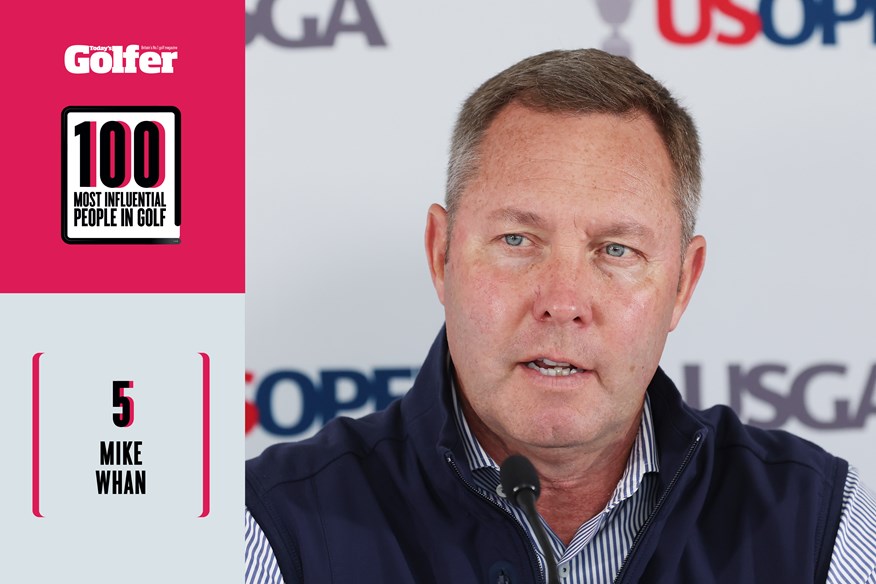
What about the LPGA?
While the women’s game does not consider itself as having a distance issue, the LPGA recognizes and supports the need for the R&A and USGA to make difficult decisions in the best interest of the sport to ensure its continued long-term growth, success, and sustainability.
An extract from a statement by the LPGA read: “We support the USGA and R&A’s decision to eliminate their previous (bifurcation) proposal related to the golf ball as we believe a unified approach to the game is important for the continued growth of women’s golf.”
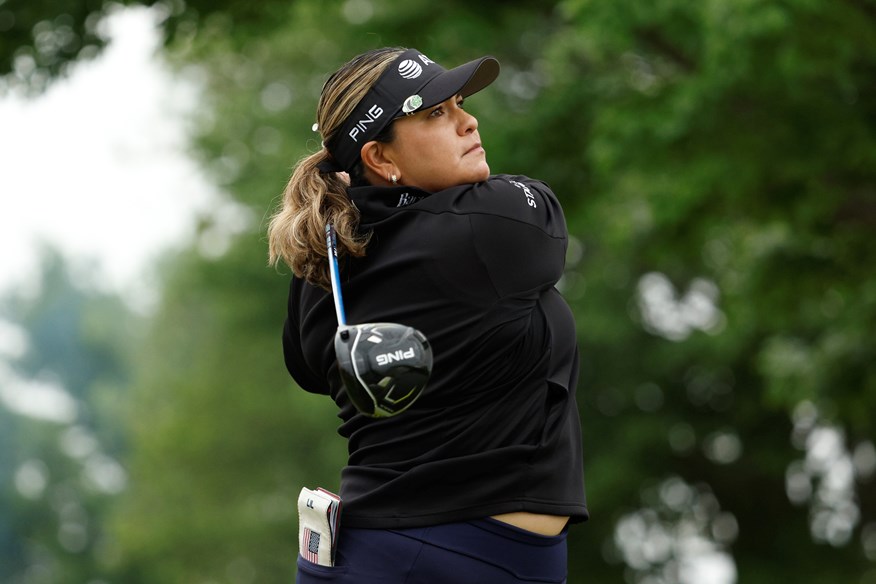
How will the rollback affect manufacturers?
The modifications will represent a sizeable burden to manufacturers both in terms of time and finance, as they begin re-engineering balls to meet conforming standards by 2028.
Perhaps the decision not to bifurcate is one saving grace that will remove the prospect of having to develop two distinct classes of golf balls long-term, which would inevitably have bumped up R&D budgets significantly.
The general feeling, although mixed, reflects a mood of disappointment that the reasoning behind the decision contradicts the interpretation of the distance data across the manufacturing industry.
And while manufacturers, in the same vein as players, resent having to take a step back in terms of pushing performance boundaries, there is a general acceptance that the consultation period was inclusive and that avoiding bifurcation is the correct call to keep the game unified.
Here are some reactions to the announcement from leading golf ball brands:
David Maher, President & CEO of Acushnet, owners of Titleist
“We are concerned that the golf ball rollback overly impacts golfers and does not fully reflect the input of those closest to the game. There have been requests to align on what data is used and how it is used to draw conclusions prior to any equipment changes being made.
“Many important stakeholders do not see distance as a problem the way the governing bodies do, and therefore come to differing conclusions about how to proceed to ensure the best possible outcome for the sport.
“We support the position of the PGA TOUR and others that there are many areas of focus at the elite level, including initiatives related to golf course setup and conditioning, and other competitive variables which, if desired, can limit the effects of distance while also providing the opportunity for a diverse skill set to succeed at the highest level.”

Chip Brewer, President & CEO of Topgolf Callaway
“We appreciate the lead time the ruling bodies have provided to conform to the new rule. This will give us time to redesign and implement new products successfully. They also modified the testing protocols to avoid unnecessary testing ambiguity. Perhaps most importantly, they sought to minimize the impact on the end consumer by providing an adequate grace period for the transition in recreational golf.
“In the end, we believe the game will be best served by us all aligning behind a common set of rules and standards. Therefore, while we will always participate actively in the debate; when a final decision is made, we will align behind it. The game at large has never been stronger and we look forward to being a major part of growing both on and off-course golf moving forward.”
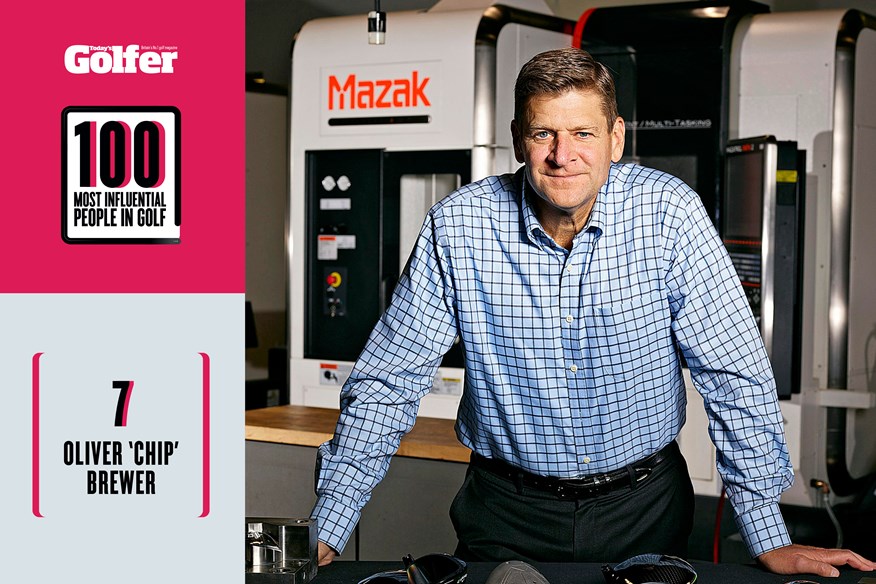
Dan Murphy, President & CEO of Bridgestone Golf (Tiger’s ball)
“While we would prefer that any new rules did not impact recreational players, we believe further commentary is no longer productive. At this point, we need to concentrate on creating conforming products that allow both professionals and amateurs to play their best golf.
“Leveraging the wealth of ball fitting data we have accumulated over the years gives us a significant advantage over competitors, and we will rely on our extensive collection of patents as well as our top-notch R&D team – including input from Tiger Woods – to ensure we continue to produce the best golf balls in the world.”
David Abeles, CEO of TaylorMade Golf
“As a brand that prioritizes improving product performance for golfers of all skill levels, the decision to proceed with the golf ball rollback is disappointing. While appreciative of the opportunity to have a seat at the table and a voice in the debate, we feel like the rollback is simply disconnected from what golfers believe is best for the game.
“Looking ahead, as the new golf ball standards come into effect in 2028 for professional golfers and 2030 for amateurs, we assure everyone, at every level of our game, that we will be well-prepared to navigate these changes.”

And finally, what do recreational golfers think of the rollback?
An internet survey of over 600 golfers by Golf Digest found that 65% would not abide by the rules that reduce ball distance, with 60% also not wanting to see the best players in the world have their distance reduced.
What do you think about the rollback? Let us know your thoughts!
BECOME A TODAY’S GOLFER MEMBER: Unlimited access to premium content and exclusive rewards!
